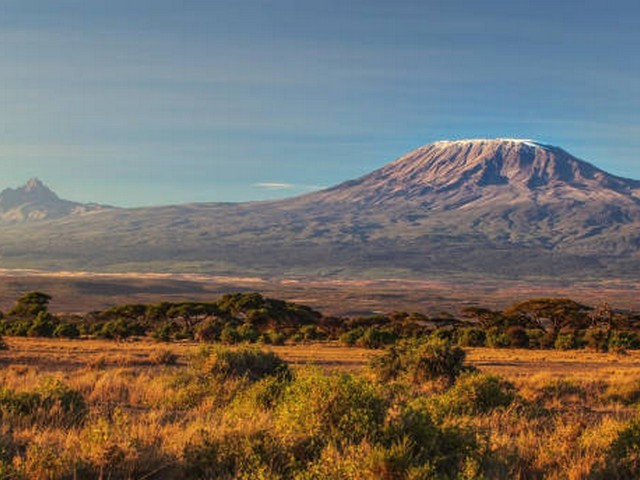High-Altitude Breathing Techniques For Kilimanjaro: Breathe Easy on The Roof of Africa
When you set your sights on conquering Mount Kilimanjaro, you’re not just planning a trek; you’re embarking on a journey of self-discovery and immense personal achievement. At Kilimanjaro Centre for Trekking and Ecotourism (KCTE), we understand that reaching the summit is a dream for many. However, the thinning air at high altitudes can turn this dream into a formidable challenge. That’s why mastering high-altitude breathing techniques is crucial to enhance your climbing experience and increase your chances of success. Let this guide be your first step towards breathing easy on the majestic heights of Kilimanjaro.
Why Focus on Breathing?
At 5,895 meters (19,341 feet), Kilimanjaro is the tallest mountain in Africa. The higher you climb, the less oxygen there is in the air. For every 1,000 meters ascended, oxygen levels drop by approximately 11%. Effective breathing techniques can help your body maximize the available oxygen, making your ascent not only possible but also more enjoyable.
Understanding High-Altitude Breathing
The Science Behind It
At high altitudes, the amount of oxygen in the bloodstream decreases, a condition known as hypoxia. This can lead to altitude sickness, which manifests as headaches, nausea, and dizziness. By employing proper breathing techniques, you can increase oxygen intake and improve carbon dioxide expulsion, which is crucial for maintaining mental clarity and physical stamina on Kilimanjaro.
Pressure Breathing
One of the most recommended techniques for high altitudes is pressure breathing. This involves inhaling deeply and exhaling forcefully. The forceful exhale helps to empty the lungs completely, making room for a deeper next breath, thus increasing the amount of oxygen entering your bloodstream.
Paced Breathing
Syncing your breath with your steps can also be incredibly effective. For instance, inhale for three steps and exhale for two. This technique not only helps in conserving energy but also keeps your respiratory and circulatory systems in harmony.
Training for Your Climb
Pre-Trek Conditioning
Begin your breathing training long before you face the actual climb. Engage in cardiovascular activities such as running, swimming, or cycling to enhance your lung capacity and stamina. Practicing yoga can also be beneficial, particularly exercises that emphasize breathing, such as pranayama.
Altitude Training
If possible, train on smaller mountains or spend some time at higher elevations. This exposure can help your body start adapting to reduced oxygen levels. For those who cannot access higher altitudes, consider simulated altitude training or an altitude training mask.
On The Mountain: Practical Tips for Mastering High-Altitude Breathing
Listen to Your Body
Every climber’s reaction to altitude varies. Pay attention to your body’s signals. If you find yourself gasping for air, slow down your pace or take a short break.
Stay Hydrated
Dehydration can exacerbate the effects of altitude sickness. Drink plenty of water to keep the oxygen delivery system in your body running smoothly.
Avoid Overexertion
Conserve energy by maintaining a pace where you can breathe easily. Overexerting yourself can lead to rapid breathing, which may not provide sufficient time for your lungs to absorb oxygen efficiently.
Sleep and Recovery
High altitude can disrupt sleep, which is crucial for recovery. Practice calm, deep breathing before bed to improve your sleep quality and overall acclimatization.
Why Choose KCTE for Your Kilimanjaro Trek?
At Kilimanjaro Centre for Trekking and Ecotourism, we not only guide you to the summit; we ensure you are well-prepared to face the challenges of high-altitude trekking. Our experienced guides are trained in high-altitude first aid and are experts in mountain safety protocols. They will be with you every step of the way, coaching you on when and how to apply these breathing techniques efficiently.
Call to Action: Book Your Adventure Today
Conquer Kilimanjaro with confidence! Book your climb with KCTE and equip yourself with the right skills, knowledge, and support to stand atop Africa’s highest peak. Whether you are a seasoned trekker or a first-time climber, mastering the art of high-altitude breathing with us will transform your Kilimanjaro experience.
Frequently Asked Questions
Q1: How long does it take to acclimatize to high altitude on Kilimanjaro?
It varies per individual, but typically, climbers take several days to acclimatize. Our routes are designed to maximize acclimatization by incorporating longer treks and rest days.
Q2: Can practicing meditation improve my breathing technique for high altitude?
Yes, meditation that focuses on deep and rhythmic breathing can improve lung efficiency and stress management, helping you maintain a calm demeanor during your climb.
Q3: Are there any medical conditions that may affect my ability to breathe at high altitude?
Yes, conditions such as asthma or previous lung infections can impact high-altitude breathing. It is crucial to consult with your doctor before embarking on a high-altitude trek.
Q4: How often should I practice high-altitude breathing techniques before the trek?
We recommend practicing daily for at least a month before your trek. Incorporate these techniques during your regular workouts to make them second nature by the time you climb.
Embark on your journey to Kilimanjaro with an arsenal of effective breathing techniques and the expert guidance of KCTE. Let us help you navigate the breathtaking landscapes and challenging altitudes with ease. Remember, every breath you take is a step closer to the summit. Reach out to us, and let’s make your dream climb a reality.




